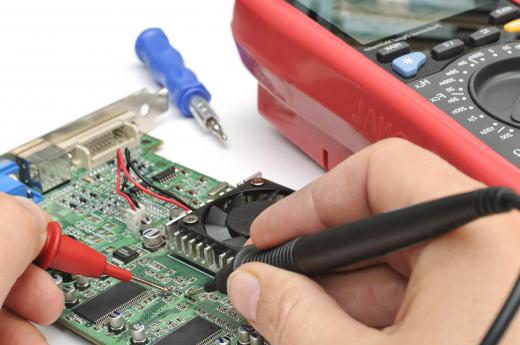An electric double-layer capacitor is an electrical component that is able to store more electric charge than ordinary capacitors. It has a higher capacitance value in units called farads, and because of this the electric double-layer capacitor is also referred to as a supercapacitor, supercondenser, or ultracapacitor. The electric double-layer capacitor may also be referred to as an electrochemical double layer capacitor. Whereas standard capacitors use an insulator between two plates, the electric double-layer capacitor uses an electrochemical mechanism to create very high equivalent capacitances. A higher capacitance means a higher quantity of electric charge contained at a given voltage between the plates.
The pseudocapacitor and the electric double-layer capacitor both refer to electrochemical capacitors. In a pseudocapacitor, there is a transfer of charge between an electrolyte and the electrode, while in the electric double-layer capacitor there is an electrolysis liquid that interacts with the electrodes to make the capacitor display a very high capacitance when used in electrical and electronic applications. In addition, the electric double-layer capacitor uses an electrolyte between its plates. This electrolyte is the insulation stored in a microscopic nonoflower formation, which is made possible by a porous material such as an activated carbon in between the plates.

With the advent of self-powered equipment and energy conversion, there is a big demand for high-efficiency and reliable storage. Capacitors are considered a solution to short-term backup power, which means any breakthrough in increasing capacitance values will be a step closer to realizing short-term backup power. Short-term backup power systems include mechanical, chemical, and electric devices, which include flywheels, gravity storage systems, fuel cells, batteries, passive components, and nuclear reactors. The potential of the electric double-layer capacitor can benefit many fields of research in power for mobile devices and transportation.
In traditional power supplies that convert alternating current (AC) into direct current (DC), the load conditions and the capacitor filter determine if certain equipment will ride through a low voltage. Without load, the DC power supply may retain its output voltage to as much as 10 minutes or more, but with load the current being drawn by the load will cause the voltage to drop in less than 1 second. For instance, telecommunication systems use –48 volts direct current (VDC) power supply systems, and the load is connected to a 48-volt (V) battery bank, which is float charged by a rectifier system. When the AC main's power is interrupted, the battery assumes the role of main power provider. It is noticeable that the battery acts like a supercapacitor.
